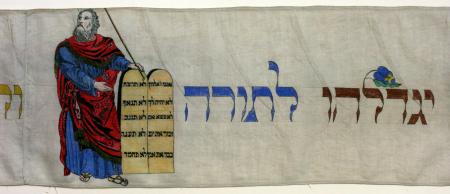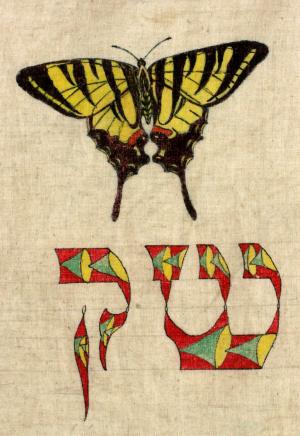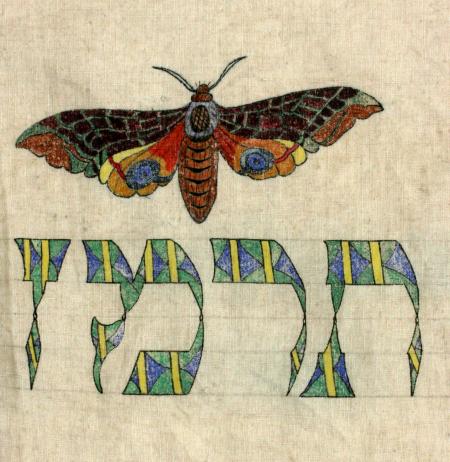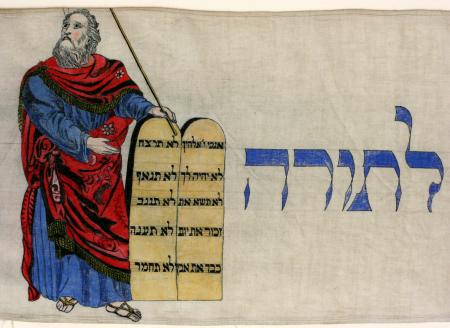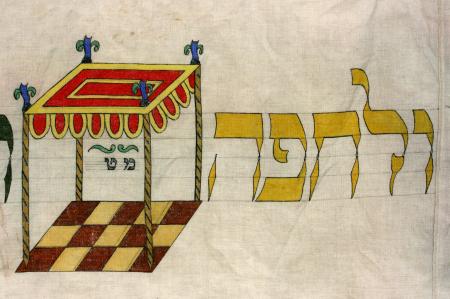Obj. ID: 39303
Sacred and Ritual Objects Wimple (Torah binder), Mülhausen, 1886

The following description was prepared by William Gross:
The custom of the Wimpel or Torah Binder stretches back some 500 years at least in the world of classic Ashkenaz, the German speaking lands. The cloth which held the child at the time of his circumcision, almost always of linen, was cut into strips and sewn into a long textile. On this lengthy cloth was embroidered or painted a formulaic inscription, blessing the child and wishing that he grow up to "the Torah, the Chupah and good deeds". The beginnings of the custom were executed on linen cloth with silk embroidery. In the late 18th century the custom passed to painting on the textile with substantial illustration, although late examples of embroidered Wimpels do exist. Wimpels in the Gross Family Collection have their origin from Germany, Denmark, the Czech lands, Luxembourg and Alsace. The Wimpel served as a Torah Binder, being brought to the synagogue for use on the child's first birthday, his Bar Mitzvah and the Shabbat Chatan before his marriage.
By the last half of the 19th century virtually all of the Wimpels were being painted rather than embroidered. On this example are anatomically, very colorful birds and butterflies along with a magnificent figure of Moses showing the Ten Commandments. The letters of the inscription are painted in particularly bright colors. It is a striking example of a late wimpel.
Name: Shilah bar Binyamin Tzvi






